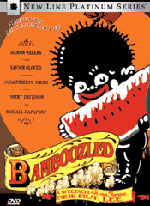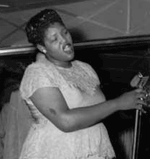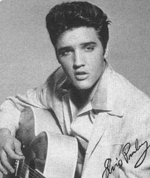Charles Hiroshi Garrett
University of Michigan
To explain why I have chosen to address this topic from a slightly different angle, a few comments about my teaching experience may be helpful. After serving as a teaching assistant in graduate school for nine courses, I have since taught four courses of my own at large public universities, UCLA and the University of Michigan, both of which attract a fairly sophisticated, liberal-minded, and diverse pool of students. Featuring manageable enrollments (between fifteen and forty, primarily undergraduates) and drawing from a wide spectrum of students across many disciplines, my courses have offered ample opportunity for class discussion and debate. Given this type of environment, what has surprised me so far in my relatively brief career is the lack of controversy in the classroom. My difficulties in teaching potentially controversial material have not involved run-ins with my department chair, school administrators, or upset parents. Nor have I encountered any noticeable resistance from my students. My problem has been quite the opposite. On many occasions I have presented class material that I thought might prove controversial or disturbing, yet my students have appeared on the surface to be unfazed, unaffected, and unmoved. I sometimes feel as if nothing will get a rise out of them—as if they are too worldly or too jaded for anything to make an impression. In my experience, instead of spending energy worrying about damage control, teaching such material has meant trying to help students engage with and understand what is controversial, what is at stake, with such material in the first place. This presents a very different kind of pedagogical dilemma—perhaps one encountered most often by new professors, especially those fresh from experiencing heated debates in graduate seminars—and I wish to describe some strategies I have used to address it. For the most part, these suggestions are common-sense tactics, successful methods employed by my own professors, but it was not until I started to face these issues myself that I began to think about them in a more systematic fashion.
Preparing the foundation
Instead of confining discussion about a potentially controversial topic to a single day, I try to prepare my students in advance. For instance, rather than jumping into a presentation about musical orientalism by displaying overheads of anti-Asian imagery and lyrics—which I have done without a tremendous amount of success—I now find it more useful to introduce broader concepts, such as musical exoticism, earlier in the term. It’s my hope that this practice enables students to consider new material in relation to familiar concepts. I also consciously plant seeds for future discussions in advance: “It looks like we’ve run out of time today to talk about composer X, but we’ll return to him next week when we discuss the significant role of gay composers in creating an expressly ‘American’ music.” In other words, I adopt a matter-of-fact attitude toward topics that some students might find controversial, but also give them time to process these ideas. I realize, of course, that this kind of strategy may contribute to what I have identified as a problem—that students appear unfazed by certain course material—but I think that in the long run the benefits of advance preparation outweigh any drawbacks.
Shock tactics and Visual Aids

I am not one to use shock tactics, in part because it doesn’t really match my style, and in part because I am not always sure what I personally would accomplish by doing so. I do know of a professor who, in the process of lecturing on blackface minstrelsy, blacks up—demonstrating from start to finish the process of burning cork and applying it to himself—and I imagine that this image stays with students for a lifetime. While that’s not an approach I am comfortable taking myself, it suggests just how bold a strategy one might employ in the classroom. Along these lines, however, I find that students respond much more quickly to visual or audiovisual examples than to print accounts. Trying to describe Al Jolson in The Jazz Singer or David Bowie’s video for “China Girl” is far less effective than simply showing a clip. My colleague Mark Clague has inspired spirited class discussions by showing footage from the films Amistad and Bamboozled. And I have provoked similar responses in my courses by projecting the cover images and lyrics of Stephen Foster’s sheet music, material that is easily accessible via the web.
Finding past controversies

Primary sources can also help students to identify and contextualize past controversies, to understand why certain musical developments created such an uproar. I assign readings that capture early reactions to ragtime and jazz, such as those contained in Robert Walser’s collection Keeping Time, or show video footage that documents the backlash that met rock and roll. To address the problem of students who arrive unprepared for class, I have also found it useful to design brief assignments that require students to analyze potentially controversial material ahead of

time. For instance, this semester my students briefly compared Big Mama Thornton’s rendition of “Hound Dog” to Elvis Presley’s rendition, first from the perspective of a 1950s record executive, and then from the students’ own 21st-century perspective. Requiring them to take a personal stand and to be ready to defend it in class generated the vigorous discussion I hoped it would.
Relating older controversies to contemporary ones
I think it is crucial to help students understand music of the past on its own terms, but I have also found it valuable to demonstrate how “old” controversies persist today. At the end of a lecture on blackface minstrelsy, I showed my students a promotional poster for an annual meeting of the Al Jolson Society, which featured a large image of Jolson in blackface. The image itself did not surprise them, considering what we had just covered, until they learned that the Jolson society meeting had occurred last fall in a town located about thirty minutes from Ann Arbor. They were just as quick to comment about the ongoing celebrations of minstrel Dan Emmett, via a Music and Arts Festival held each year in his Ohio hometown.
Returning to controversial material
In some cases, it seems that no matter what I do, students remain unwilling to speak in class about controversial material … at least the first time. But returning to such material later in the term, after students have had a chance to process it, can be very productive. My students seemed pretty quiet and subdued in response to their first exposure to blackface minstrelsy, but at the start of our next class, devoted to Stephen Foster, I reopened what became a very active discussion that carried through the entire class as we traced the arc of Foster’s career.
Learning Outside the Classroom
I am also starting to discover that silence in the classroom is not always a bad sign, that it does not always indicate that provocative material is failing to reach students. This has become more obvious to me in the process of designing short writing exercises that allow students to engage with such material on their own time. Recently I gave my students an open-ended assignment that asked them to choose any form of musical exoticism on the syllabus and to discuss its musical and cultural relevance in a few paragraphs. I was struck by how many students who had not spoken up in class chose to write about blackface minstrelsy and produced thoughtful, perceptive, passionate mini-essays. After the term ended, one student wrote me to say that his most lasting impression of the course involved the time we spent on this subject. Not knowing anything about this aspect of our musical past made his jaw drop, he confessed, but the experience enabled him to gain a new understanding of American musical history.
Like other participants in this discussion, I believe it is my responsibility to learn how to help my students wrestle with controversial material in public class discussions, and I hope to enhance these pedagogical skills over the years. At the same time, I take comfort in knowing that this material is touching some students deeply even when it’s not always readily apparent in class; their writing assignments suggest that they are much more engaged than I initially recognized. As a result, I have come to understand that sometimes my expectations as a teacher have to change—that I will need to work harder to gauge what is proving effective in and out of the classroom, and that my students have much to offer that can help me improve as a teacher.
Next Essay (Link to “Diverse Musical Traditions, Diverse Students”)
Works Cited
Book
Walser, Robert, ed. Keeping Time: Readings in Jazz History. New York: Oxford University Press, 1999.
Sound Recordings
Billboard Top Rock ’n’ Roll Hits—1956. Rhino R2 70599, 1989.
Thornton, Big Mama. Hound Dog/The Peacock Recordings. MCA MCAD 10668, 1992.
Films
Amistad. Dir. Steven Spielberg. DreamWorks, 1997.
Bamboozled. Dir. Spike Lee. New Line Cinema, 2000.
The Jazz Singer. Dir. Alan Crosland. Warner Brothers, 1927.
